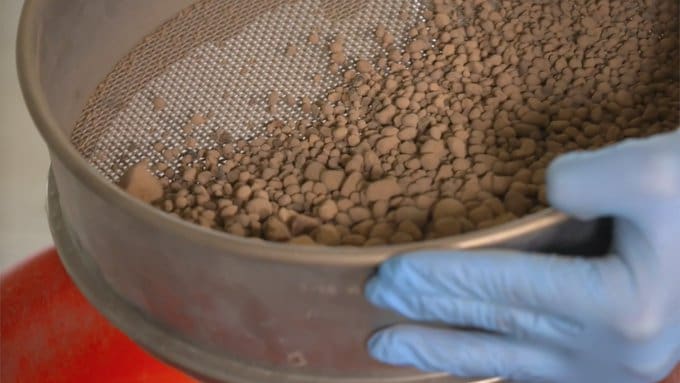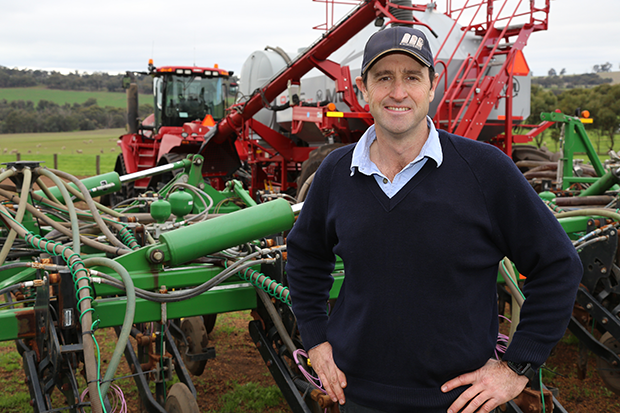
The current phase of research is putting principles into practice through a combination of laboratory, glasshouse and field studies. Photo: GRDC
NEW research into ironstone gravel soils is working to unlock potential and increase crop yields for Western Australian growers with these challenging soil types.
Gravel soils account for 24 per cent of land used for crop production in southern WA and are also characteristic of major production regions in South Australia (Eyre Peninsula and Kangaroo Island) and Victoria.
A three-year Grains Research and Development Corporation (GRDC) investment, led by Francesca Brailsford from SoilsWest, Murdoch University, is aiming to provide tools for growers to identify and understand their ironstone gravel soils, and make more informed management decisions on cropping, fertiliser and water.
Project research as part of a phase one GRDC investment undertaken by SoilsWest at the University of Western Australia (UWA), focused on uncovering new information on different gravel types.
Expanding on phase one
The current phase of research at Murdoch University is now putting principles into practice through a combination of laboratory, glasshouse and field studies.
Dr Brailsford said that the most recent work on the project had explored different soil treatments from a range of research institutes, as well as those commercially available.
“Phase one really focused on the gravel fraction of the soil which has often been overlooked in common soil analysis,” Dr Brailsford said.
“We’re now looking to actually use that information and be able to implement step change for growers, moving on to glasshouse trials and field trials, so we can test out different methods to improve yields on these soil types and get results.
“This new phase of the project is really important because it puts the gravels back into the context of the soil profile, and really starts to address some of those issues we have with gravels in conjunction with other soil constraints.
“So whether it’s non-wetting or issues with how the roots grow through the gravel, we’re addressing those problems as well.”

Williams grower Mark Fowler said that major challenges of ironstone gravel soils included the tie-up of nutrition, the non-wetting nature of the soil, root challenges and trafficability. Photo: Anvil Media, GRDC
Williams-based grower Mark Fowler said he knows firsthand the challenges of cropping on ironstone gravel country.
Mr Fowler runs a 6500-hectare mixed farming operation comprising canola, barley, oats and export oaten hay, as well as merino sheep, across six locations in Williams, Wickepin and Dudinin.
“White gum gravels are a feature of our soil types at the Williams farm,” Mr Fowler said.
“We have predominantly ironstone gravel soils on the upper part of the landscape, transitioning through to granite loams in the valleys.
“The four major challenges that we are confronted with on this soil type are the tie-up of nutrition – particularly phosphorus – the non-wetting nature of the soil, root challenges – with high levels of aluminium and increased incidence of root disease – and trafficability.”
Mr Fowler said that new information for growers on how to overcome the constraints of these soil types could help improve crop yields and grower confidence in making decisions around issues such as dry seeding on non-wetting soils.
“We’ve been dry seeding a significant part of our cropping program for a long time now. If I’d known ten years ago what I know now, I suspect we would have done it a lot better,” he said.
“Early seeding has been the single biggest factor in increasing our long-term yields. If we can improve crop establishment when moisture is marginal, which is increasingly the case these days, it will increase our confidence seeding hard to establish high value crops such as canola.”
New methods, technologies
GRDC manager soils and nutrition – west Rowan Maddern said that by its completion in 2024, the project would provide growers with transformational knowledge leading to new methods and technologies to improve the profitability and yield of crops grown on ironstone gravel soils.
“Next year, the project will incorporate field trials in contrasting gravels, both in Western Australia and on South Australia’s Eyre Peninsula as well as other locations,” Dr Maddern said.
“Results from the trials will then be used to identify the links between soil properties to develop tools, methods and technologies to provide management strategies for growers to increase nutrient and moisture availability to their canola and wheat crops.”
The ironstone gravel soils project is part of a SoilsWest alliance initiative, which also includes UWA, Department of Primary Industries and Regions South Australia, Queen’s University Belfast and Bangor University.
Source: GRDC

HAVE YOUR SAY